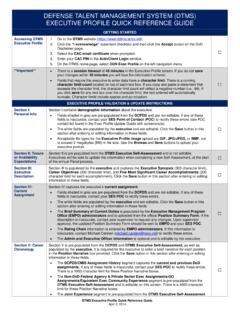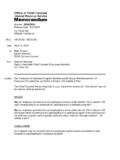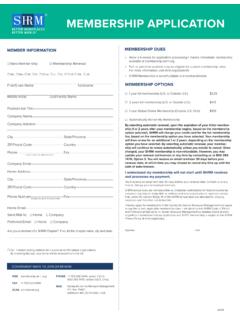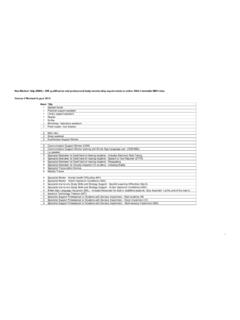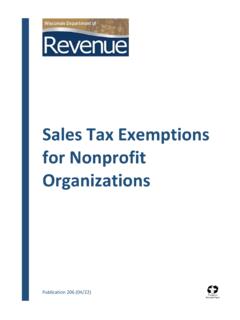Transcription of European Health & Fitness Market Report 2020 - Deloitte
1 EuropeanHealth & Fitness Market Report 202002 This Report covers the calendar year 2019, however we would like to address briefly the dramatic developments in relation to the global Coronavirus (COVID-19) disease that is also heavily impacting Europe. Today, March 18, 2020 we have to finalize this Report as it needs to go into final layout and printing in order to be ready for our release as planned on April you will read in this Report , the year 2019 was again an excellent one for the sector and we know from discussions with leaders in the industry that also the 1st quarter of 2020 had started very in the last weeks we started to see initial effects of the COVID-19 pandemic, which is by now impacting our sector in an unprecedented many countries Health & Fitness facilities have been ordered to close temporarily by governments or have closed voluntarily.
2 In some countries, even a complete lock-down of society has been imposed and people have to stay at home. The good news is that our sector has evolved in the digital era and developed many different ways for members beyond the clubs to stay active anywhere and anytime. Many operators are experimenting with digital Fitness by offering online classes or are encouraging their members to use the possibilities to exercise at home, taking advantage of the many apps and online exercise videos that are available. We encourage everyone to stay strong and wish you all the very best in these challenging Rutgers & Karsten HollaschEuropean Health & Fitness Market | Report 202003 Introduction 04 The European Fitness Market at a Glance 06 Executive Summary 08 The Ecosystem of the European Fitness Sector 10 Top Operators Rankings 18 Top 30 Operators Profiles 24 Other Operators Short Profiles 60 Recent Mergers & Acquisitions 64 The View from Brussels 70 Selected Markets Overview 76 Selected Markets Profiles 84 Appendix 124 About EuropeActive 125 EuropeActive Event Calendar 126 About Deloitte Sports Business Group 127 Methodology
3 128 Glossary 13006 The European Fitness Market at a Glance EUR billionTotal revenues+ millionNumber of Fitness clubmembers 63,644 Clubs EUR Average gross membership fe e per month million Members of top 30 share of top 30 operators by membership17M&A dealsPenetration (total) (15+) European Health & Fitness Market | Report 202007 EUR billionTotal revenues+ millionNumber of Fitness clubmembers 63,644 Clubs EUR Average gross membership fe e per month million Members of top 30 share of top 30 operators by membership17M&A dealsPenetration (total) (15+)08In its seventh edition, the 2020 Europe Active European Health & Fitness Market Report presents the most comprehensive analysis of the European Health and Fitness industry to date.
4 The Report contains current information on the major European Fitness markets and club operators, recent merger and acquisition activities, as well as a chapter on the European Fitness ecosystem. In terms of revenue, the European Health and Fitness Market grew by to EUR billion in 2019. In addition to the 28 European Union member countries, this figure also includes Norway, Russia, Switzerland, Turkey and Ukraine. The rev-enue development was, however, slightly negatively affected by exchange rate effects. At constant currency exchange rates, the year-on-year growth rate amounts to growth was again driven by a increase in the number of clubs across all countries as well as an increase in average members per club of , driving a total increase in members of to million. At the same time, average monthly mem-bership revenue decreased by , pri-marily driven by the continued expansion of low-cost shown in the chapter on the leading operators the top 10 European Fitness operators as measured by revenue, achieved total revenues of EUR billion in 2019.
5 While their Market share increased from to , the Euro-pean Fitness Market nonetheless remains relatively fragmented. With respect to membership, the 30 largest operators increased their combined Market share by percentage points to due to an increase by million (+ ) to million members from 2018 to development was predominantly driven by low-cost operators such as Basic-Fit (+380,000 members), clever fit (+230,000), FitX (+133,000), PureGym (+123,000), EASYFITNESS (+110,000), RSG Group (+100,000), VivaGym Group (+80,000) and The Gym Group (+70,000), who were among the fastest-growing com-panies in terms of absolute membership. Basic-Fit ( million), German operator RSG Group ( million members), and British Market leader PureGym ( million) also solidified their positions as the top 3 Euro-pean operators in terms of membership, while clever fit (950,000) and SATS Group (687,000) jumped to fourth and seventh in the overall these growth figures largely rep-resent organic growth, some companies such as Basic-Fit (who acquired Fitland), Fitness Park Group (Fitlane), LifeFit Group (smile X) and VivaGym Group (Duet Fit) were also involved in M&A transactions, as highlighted in the merger and acquisitions section of this Report .
6 Overall, Health and Fitness club operators remained highly attractive to investors from both inside and outside the industry, with 17 major M&A transactions taking place in 2019 (and already two in early 2020).In terms of revenue, British premium operator David Lloyd Leisure (DLL) retained first place by a considerable margin with revenues of EUR 587 million in 2019, which represents an increase of compared with 2018. Ranking second is Basic-Fit (EUR 515 million), driven by 155 additional clubs in 2019. Norway-based SATS Group (EUR 405 million) ranks third, followed by Switzerland-based Migros Group (EUR 367 million) and German Market leader RSG Group (EUR 365 million). The top 10 by revenue contain five low-cost operators, namely Basic-Fit, clever fit, Fitness World, PureGym and RSG Group. This Report also provides profiles of the largest national Fitness markets in Europe.
7 Together, the 17 countries analyzed have million members ( of the Euro-pean Market ), revenues of EUR billion ( ) and 51,511 clubs ( ). With a total Market volume of about EUR billion, Europe represents the second- largest Fitness Market in the world, only Executive SummaryEuropean Health & Fitness Market | Report 202009slightly surpassed by the US Market , which reported revenues of EUR billion (USD billion) in 2018 according to the 2019 IHRSA Global Report . As shown in Figure 1, Germany and the United Kingdom remain the two largest national Fitness markets in Europe with total revenues of about EUR billion each. While the German Market increased by in 2019, the UK Market grew by at constant currency and by in euros. When combined with France (EUR billion), Spain (EUR billion) and Italy (EUR billion), the five leading coun-tries account for 65% of the total European Health and Fitness Market .
8 In terms of membership, Germany remains the largest Market in Europe with a total of million members (+ ), followed by the UK ( million, + ), France ( million, + ), Italy ( million, + ) and Spain ( million, + ). As shown in Figure 2, Germany and the UK also displayed above-average membership growth rates in 2019, largely driven by the continued expan-sion of low-cost operators in both countries. Considerable differences between the individual markets remain. Markets such as Sweden ( penetration rate), Norway ( ) and the Netherlands ( ) rep-resent medium-sized countries with high membership figures relative to the popu-lation, largely due to the high proportion of physically active people, relatively high urbanization rates, relatively high level of average income, and the presence of large Fitness operators in these countries.
9 At the same time, professional markets such as Poland still display considerable Market potential with a penetration rate of This Report is the most comprehensive piece of research on the European Health and Fitness Market to date, but it is still only a step towards more transparency and knowledge in this industry. Obtaining reliable data on the development of some individual national markets and leading Fitness operators of the European Health and Fitness industry remains challenging. In this context, further professionalization of local Market research is still 1 Top 10 European Fitness markets by revenue in million EUR and share of the European marketFig. 2 Penetration, growth and membership of top 10 European Fitness markets (2019)DEESFRUKITNLPL23 othersATNOSE01,0002,0003,0004,0005,0006, 0005,5105,5102,5832,3522,3251,4019868155 445325,59520%20%9%8%8%5%4%3%2%2%20%65% of total European market6%7%3%5%4%0%0%1%2%SwedenNorwayPola ndAustria8%9%Average growth oftop 10 marketsPenetration rate (% of total population)Membership growth10%20% = + : EuropeActive, : Bubble size represents total membership as of : EuropeActive, insightsThe German Fitness Market continued its growth in 2019, increasing its membership to 11,660,000 and total revenues to EUR billion.
10 Thus, of the total popula-tion are members at one of the 9,669 pri-vate Fitness clubs. It should be noted that the underlying "Eckdatenstudie" (data sur-vey) published by DSSV, DHfPG and Deloitte does not include non-profit sports clubs ( Vereine ), as these typically offer a wide range of sports in addition to Fitness and are generally considered less relevant to the total Fitness Market increase in the number of clubs (+ ) and membership growth of were pre-dominantly driven by chain operators, especially from the low-cost segment. Hence, RSG Group ( million members), clever fit (854,000), FitX (783,000) and EASYFITNESS (370,000) had the highest membership figures and were also the fastest-growing companies in absolute terms with about 506,000 additional mem-bers in 2019. Together, the leading opera-tors account for 38% of the total member-ship base.










